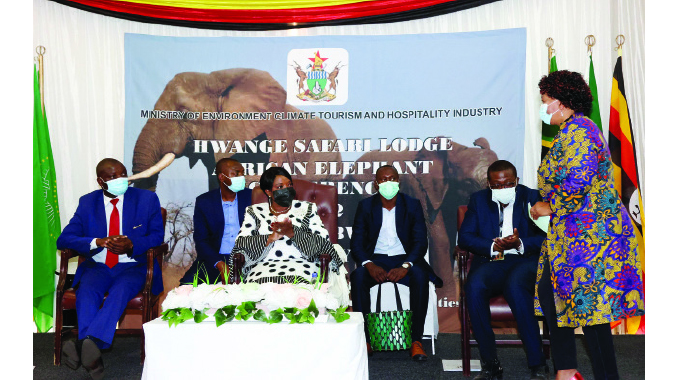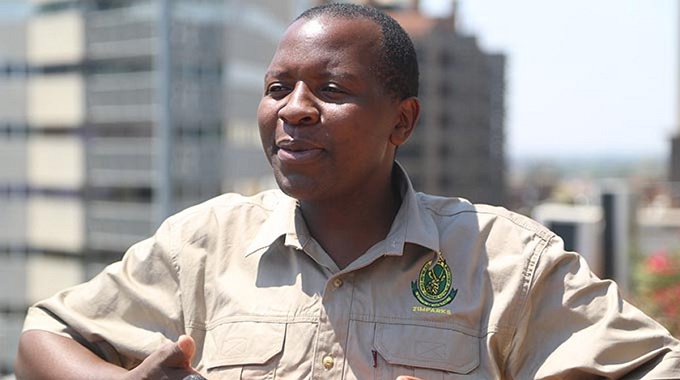One health approach revolutionises health communication and reporting

Andile Tshuma, Chronicle Reporter
EMERGING public health crises have exposed the need for well-thought-out public health communication strategies in times of health emergencies.
However, not all public health emergencies involve humans. Sometimes we have floods, severe droughts, we have burst sewers overflowing everywhere, leading to typhoid, cholera and diarrhoea outbreaks, making people sick, sometimes killing some, and having too few hospital beds for any sick people. Sometimes we have rabies, anthrax, foot and mouth disease, we still have Covid-19, and who knows what’s next?
For many years, the Environmental Management Agency was penalising the Bulawayo City Council for discharging raw sewer effluent into the environment. Some of the cases are still in the courts. Recently, during a tour of the recently rehabilitated Southern Areas Sewer Treatment Works, Bulawayo Chamber Secretary Sikhangele Zhou said discharging raw sewer into the environment will be a thing of the past as the sewer treatment plant was not functional.
Well done to the city, however, for all the years when raw sewer was just flowing into the Umguza River, Khami Dam and other water bodies, what were the potential health risks for humans, and animals drinking that water? How about aqua life, the fish, crocodiles and other living organisms there? What would be the end game?
Another digression, in the country, mining operations are popping up everywhere and some artisanal miners and other regularised operations are still using mercury, a very dangerous substance, which finds its way into water bodies. Where does it all end up? What happens to people downstream, and aquatic life? It is almost definite that some public health problems will emerge from that type of situation.

Artisanal miners
In all such “everyday” situations, where communities normalise the abnormal, clear health communication and health reporting strategies are needed to avert a crisis.
This presents vast opportunities for health and environmental journalism.
It is becoming increasingly clear that resolving most of the complex global health and medical problems requires interdisciplinary, intersectoral expertise, multifaceted approaches, as well as full cooperation from governmental, non-governmental, and educational agencies.
A new concept, “One Health” is an approach that recognises that the health of people is closely connected to the health of animals and our shared environment.
The need for a collaboration of multiple disciplines and sectors working locally, nationally, and globally to attain optimal health for people, animals, and the environment cannot be overlooked anymore.
African journalists were recently encouraged to take up One Health reporting, which is a new approach to dealing with global public health, environmental and planetary challenges.
The Internews Health journalism Network is one of the global organisations pushing for the media to adopt this new approach of journalistic practice, as part of ways to package information for communities to understand the intersectionality in these different environmental and human health challenges.
The organisation offers vast resources for journalists and practitioners in media and communications-related work, as well as a platform for partners and engagements to better tell stories of impact that will help transform communities.
Recently, Zimbabwe hosted the African Elephant Conference, and one of the key issues that were raised at the conference was the growing levels of human-wildlife conflict.
Annually, an average of 60 Zimbabweans are killed in human-wildlife interactions, and most of the fatalities are from elephant attacks.
Some of the reasons are attributed to the scarcity of resources, with perennial droughts forcing wildlife out of national parks and into communal areas in search of food and water.
Zimbabwe’s increasing elephant population has also been highlighted as a cause, with Zimbabwe Parks and Wildlife public relations manager Tinashe Farawo, in a recent interview, saying that Hwange National park no longer can comfortably accommodate its elephant populations.

Mr Tinashe Farawo
Humans have also been blamed for encroaching into national parks and wildlife areas due to an increase in the human population. Such clashes between humans and animals may lead to increased conflict, desertification, and forced migration to areas with better water sources. The situation is a health story waiting to be told.
Needed is an intentional effort to report on one health, and bring together the different aspects that are involved, showing the animal health, human health and planet health dimensions altogether.
In light of the above “daily challenges”, the One Health approach offers a ray of hope in addressing some of our global challenges, upon the realisation that the current fragmented framework of health governance for humans, animals, and the environment, is failing to meet prevailing health challenges and is proving unsustainable.
The world needs an approach that supports global health security and clinical medicine by improving co-ordination, collaboration, and communication at the human, animal and environment interface to address shared health threats such as zoonotic diseases, antimicrobial resistance, food safety, and others.
The media has a role to take up this new wonderful opportunity and use the One Health approach for better health and a cleaner, healthier environment for all. — @andile_tshuma











Comments